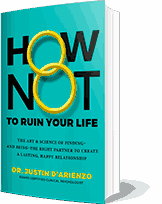- HOME
- PSYCHOLOGICAL SERVICES
- ONLINE COURSES
- Our Partnership Begins When You Purchase an Online Course
- Get to Know Dr. D’Arienzo, Relationship Expert
- Florida Premarital Preparation Online Course
- Georgia Premarital Education Online Course
- TwogetherinTexas Premarital Online Course
- Tennessee Premarital Preparation Online Course
- Minnesota Premarital Education Course Online
- Oklahoma Premarital Counseling Online Course
- South Carolina Premarital Preparation Course
- West Virginia Premarital Education Course
- Online Marriage and Relationship Tune Up Course
- Florida DCF Certified Parent Education and Family Stabilization Online Course
- Georgia Qualified Parent Education and Family Stabilization Online Course
- Texas Qualified Parent Education and Family Stabilization Online Course
- High Conflict Co-Parenting Online Certificate Course (8 Hours)
- Online Anger Management Four Hour Course (Level 1)
- Online Anger Management Eight Hour Course (Level 2)
- Sexual Harassment Online Training
- BUSINESS & PERFORMANCE PSYCHOLOGY
- CLINICAL, COUPLES, & FAMILIES
- ADHD Treatment & Evaluation Services
- Anger Management
- Anxiety Treatment & Evaluation Services
- Borderline Personality Treatment Services
- Cognitive Behavioral Therapy (CBT) Self-Help
- Couples Counseling and Marital Therapy
- Consent for Psychological Services for Minors Post-Divorce
- Depression Treatment Services
- Infidelity Recovery
- Jacksonville Counseling and Psychology
- Military Psychology & Tricare
- Narcissistic Personality Treatment Services
- Online Counseling
- Psychoeducational Testing
- Psychological Testing and Assessment
- Psychotherapy & Counseling
- FORENSIC PSYCHOLOGY & EXPERT TESTIMONY
- LIFE COACHING & EXECUTIVE COACHING
- MMPI TESTING & ASSESSMENT FOR SECURITY AND LEO
- CPI Police and Public Safety Assessment
- G License Psychological Testing
- Online Psychological Testing for Armed Security Guards and Personal Protection Officers
- MMPI Texas Level III CSO and IV PPO Psychological (ONLINE)
- Requirement for Texas Security License Applicants: MMPI Evaluation
- Level 3 Security Guard New Mexico Online MMPI Psychological Evaluation
- PSYCHOLOGICAL PUBLIC DISABILITY QUESTIONNAIRES (DBQ)
- ONLINE COURSES
- TEAM
- D’Arienzo Psychological Group Overview
- Dr. Justin D’Arienzo, Psy.D., ABPP
- Mario Decunto, LMHC
- Dr. Amy Hartley, Ph.D.
- Dr. Erica Janson, Psy.D.
- Alan Lipzin, LMHC
- Cynthia Salameh, Esquire
- Wendy Monger, Tutoring Specialist and Academic Coach
- Dr. Michael Nackashi, Psy.D., Clinical Psychologist
- Joseph Zichi, LCSW
- Mack, Roman and Roxy D’Arienzo
- MERCH & SOCIAL MEDIA
- BOOKS
- APPT REQUEST
Emotional Process of Divorce
Posted by: Dr. Justin D'Arienzo, Psy.D., ABPP
You would be surprised to know that divorce follows many of the same patterns of grief such as losing a loved one to death. However, this type of grief is often more complicated given that the person has not physically died and continues to exist while going on without you intimately. Though retrospectively, this person as you knew them, has died. Now you must rectify the loss of your partner and their continued influence over your life and your children. Certainly, your level of grief is determined by who left who and what occurred in the relationship.

Purchase Our High Conflict Co-Parenting Course Here
Marriages or relationship that end suddenly and without warning seem to be the most traumatic for the parent being left. On the other hand, sometimes divorce is met with relief by both parents if there had been extreme ongoing conflict. Bear in mind that every divorce is different and every party brings different factors to the relationship during and after the break up.
Kubler Ross’s Grief Model (1969):
The most commonly referred to model of the divorce process is Kubler Ross’s Grief Model. This model is used to compare our response to death as being similar to our response to the loss of a marriage. The stages are as follows:
- Denial: Shock and disbelief of event.
- Anger: Frustration filled and outpouring of emotions.
- Bargaining: Examining how things may be okay without the person. This begins in very small doses.
- Depression: Realization that this person is gone which bring sadness.
- Acceptance: Gaining a sense of relief and willingness to move forward without this person in your life.
As stated above, divorce has other challenges and does not necessarily follow the Kubler Ross Model. Divorce, like losing someone to death, does include the process of emotional upheaval, chaos, behavioral change, and then adjustment. However, the process of divorce has its own nuances. Based on my experience of working with thousands of divorcing and divorced people, I would suggest combining Bohannan’s (1970) and Hagemeyer’s (1986) stage models of divorce. This combination will best illustrate the stepwise challenges that a divorcing person passes through as they begin to transform from their married self to their new independent self. Please also note that individuals often go through these models at different times during the process, may revisit stages at later times, not experience one, or experience multiple at once. These stages are the process that most people follow.
Paul Bohannon’s Model of Divorce (1970):
- Emotional Divorce: The beginning of emotionally separating yourself from the other spouse. This often occurs for one person before the other is aware.
- Legal Divorce: This is the lawful end of the marriage by Court action. Despite this usually occurring early in the process, this is only the beginning of one’s journey toward “total divorce”.
- Economic Divorce: You now have two households. One of you may have returned to work and the other may be working more, but you are both likely learning to live differently now that it costs more money to run two households. Once you have your footing, you move beyond this stage.
- Co-parental Divorce: The start of negotiating joint parenting decisions, determining your roles as parents, possibly letting go of old roles and adding new ones, spending less or more time with your children, and learning to hopefully be a successful parent in a binuclear family.
- Community Divorce: The changes that occur within relationships and friends. As the divorce continues, you may receive less support from family and friends. You may no longer feel comfortable being around married friends or around mutual friends of your spouse’s either. This may begin to feel the push to date again; but, you are likely very anxious about it.
- Psychic Divorce: At this state, the stages above are mostly resolved or you have gained more comfort within those areas. Now you are moving toward independence, are self supportive, and gain more insight as to why the marriage failed. Concurrently, you should spend less time in regret or blaming the other or yourself and more time learning about yourself and adapting to the single life and possibly the dating world.
Stanley Hagemeyer’s Additional Stages (1986):
Stanley Hagemeyer offers two additional psychosocial phases or crises that occur which eventually need to be resolved during the divorce process. Hagemeyer’s stages are evident in my clinical practice when working with divorcing families. These phases are:
- Loss of Dreams: The loss of the dream of marriage and having a partner, the loss of one’s expectations of marital bliss, and the loss of the idea of raising children together, retiring, traveling, and spending time with grandchildren.
- Loss of Physical Accessibility: As the divorce process begins, one partner is no longer there for the other physically, emotionally, and or sexually. The relationships and resources attached to the other person are removed as well. This loss is sensed regardless of one’s feelings of attachment to the other partner.
Please note that I do find Hagemeyer’s crises to be the most devastating and emotion generating when the divorce process begins, especially if one partner was unaware that the other had been planning for divorce for an extended period of time and the news of wanting a divorce was brought about without warning.
What can individuals do to adjust to the sudden news or not so sudden news of divorce?
Greff & Van Der Merwe (2004) ‘s have written about seven resiliency factors which contribute to stability for individuals and families after divorce. One should ensure that these areas are identified and then bolstered as how you cope with your divorce early on will impact your parenting and co-parenting.
- Intra-family support (support within nuclear family).
- Family support (support from extended family).
- Support of friends.
- Faith (belief in higher power or engaged in spiritual group).
- Financial and work security (especially if the parent was female).
- Alternative support resources (neighbors, schools, and churches).
- Family hardiness (how well the family can handle a crisis).
There are other factors we know about divorce and gender that you should know about. Women turn to family and friends while men turn to other women. Divorce workshops have been found to improve resiliency after divorce. Further, forgiveness is imperative. Forgiveness is not forgetting, but letting the hurt go. Forgiveness decreases rumination and provides people with a new way to think about their circumstances. Moreover, those who take responsibility for their new life will be more resilient and report becoming closer to family and friends in comparison to those in a pre-separation status.




